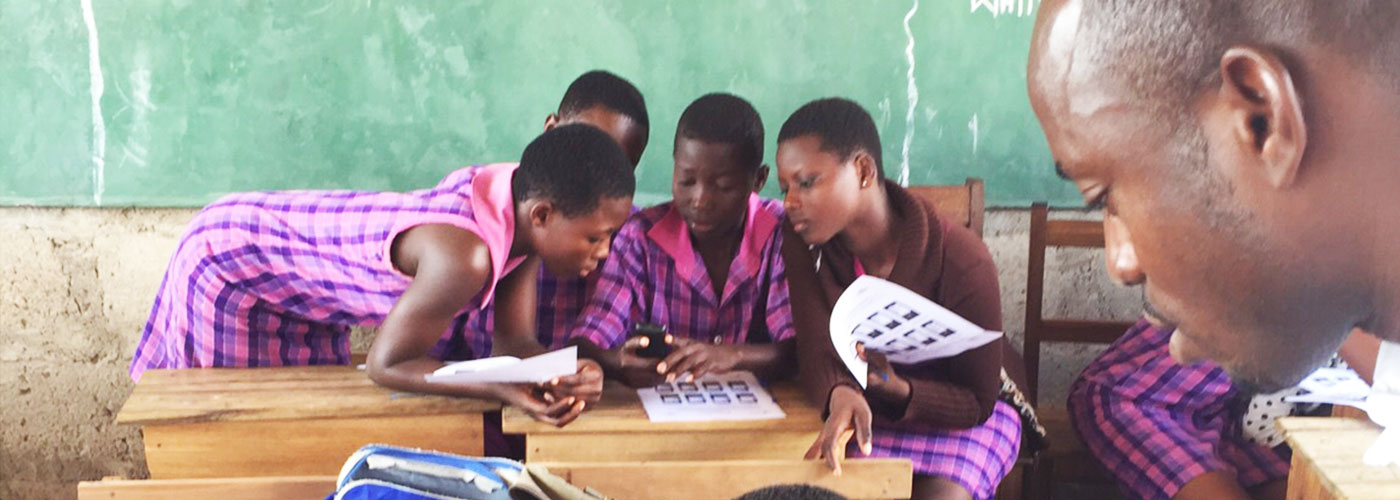Eneza’s mission is to make 50 million kids across rural Africa smarter through the use of ubiquitous mobile technology. To date, our customers are students and adults at the bottom of the pyramid, and more than 60% are from rural parts of Kenya without access to the Internet. Our customers have to budget every single penny toward meeting their daily living needs.
If you work for a startup, you have to get your hands dirty and multitask like a mother. Tweet This Quote
However, even amidst these difficult conditions, we were able to grow our SMS subscription from 180,000 to 825,000 in just two years. As the Chief Business Development Officer, I led our team in iterating our business model multiple times in order to figure out how to market and scale our EdTech company within a rural African market. In the process, we learned the following five key things that helped diversify us from our competition.
1. The right timing matters.
Every great marketing strategy is a cocktail of two things: the right timing, and given that we operate in Africa, the occasional shedding of blood, sweat and tears. It took our company four years to officially launch in the Kenyan market. People would ask me, “Why did it take you four years to launch the product?” and my answer is usually, “We had to wait for the right timing so we could perfect our product and our marketing strategies to ensure we were ready to hit the mass market.”
It’s important to trust your gut and use your data for any crucial decision or strategy. Tweet This Quote
It took time to build a business model that would scale. Working with an SMS product in the EdTech industry, people always assume the telecommunications provider (Telco) figures out the right marketing approach and carries out the strategy. This is totally false. The product does not belong to the Telco; it belongs to us. The Telco did not give us their consumer products to market, so why should we give them ours? Thus, we had total control on how to best market our product, and we took the time to get it right. We limited the extent to which the consumer department of the Telco worked with us, so ultimately we could launch our product on our own timeline.
2. Multi-task like a mother.
We get our hands dirty, and you have to as well. Sometimes goals and decisions are handed down to your sales and marketing team that don’t seem to make any sense. I’ve had many occasions where sales and marketing strategies have been designed as Band-Aids—these are the times when I have to multitask, as if I had 10 children and a husband who acts like my 11th. It’s important to trust your gut instinct and most importantly to use your data for any crucial decision or strategy.
Even when you overcome failure, never get comfortable with success. Tweet This Quote
For instance, in 2014 our billing was shut down as the result of an amendment to the Kenya communications agency policy. I was in constant negotiations with the national communications agency and Telco partner to revive our billing. In the meantime, I was iterating our model of selling to schools and building a customer care team that responds to over 20,000 calls a month, ensuring we increase users at minimal costs (since we weren’t generating any revenue). I had to ensure we succeeded in one key thing— increasing our customer base. Nine months later, we had a 70% increase in our user base, just in time to bill our users.
3. Find the little successes in your failures.
In the midst of failure, it is crucial to pinpoint what can potentially work moving forward and turn it into a win. When our billing system was shut down, we seized an opportunity to increase our user numbers, since customers were not being charged for our service, We drew lessons on user conversion from this billing system failure. Don’t get me wrong—Eneza’s failed go-to-market strategies are plentiful. But it is through these failures that we were able to morph our strategies into ‘product as marketing’ tools.
Even when we overcome failure, Eneza never gets comfortable with success. We like to say, “It’s always go time.” We use our successes as a stepping-stone to the next strategy and as a trading card to negotiate with Telcos or other partners. Remember, when you show them numbers and real milestones, they are more likely to give you what you want.
In the midst of failure, it is crucial to pinpoint what could work moving forward and turn it into a win. Tweet This Quote
4. Use product as marketing.
When I say ‘product as marketing’ tools, I don’t mean things like digital marketing or business intelligence solutions. What I do mean is echoed by our CTO, Kago, who always says, “Start the marketing innovation with humans, test it, and then put it into the product.” We take all our marketing strategies that work and automate them as marketing tools within our product, which end up giving our customers an awesome user experience. We do this by collecting data in real time, identifying more about who the customer is during every step of their product journey. This closeness to our users attracts additional companies who may see Eneza as a marketing medium for their products.
5. It is all about the users.
Do you know who and where your customers are? Of course you do. So why spend hours networking at conferences? If your customers are not at these events, spend the least amount of your time attending them. I find a lot of entrepreneurs in African EdTech are afraid to travel the distance and spend the bulk of their time with customers. This is what I’m personally passionate about. You will not be able to build a sustainable business model that can be replicated in any part of the world if you do not spend 99.99% of your time with your customers and 100% with your product.
You can’t build a sustainable, replicable business model if you don’t spend 99.99% of your time with your customers. Tweet This Quote
Let me be clear. You must attend events like these, especially if your business runs primarily on a B2B model (what I think is the silent killer for EdTech companies!). Even in that case, if you do not constantly call your users, iterate your product based on field research and user data, and involve your customer in that process, then you will have a perfect product with no business model.
To all my fellow entrepreneurs working in the EdTech space in Africa, especially targeting rural parts of Africa, take my words as biblical truth. These lessons have helped us build one of the greatest business models out here.



